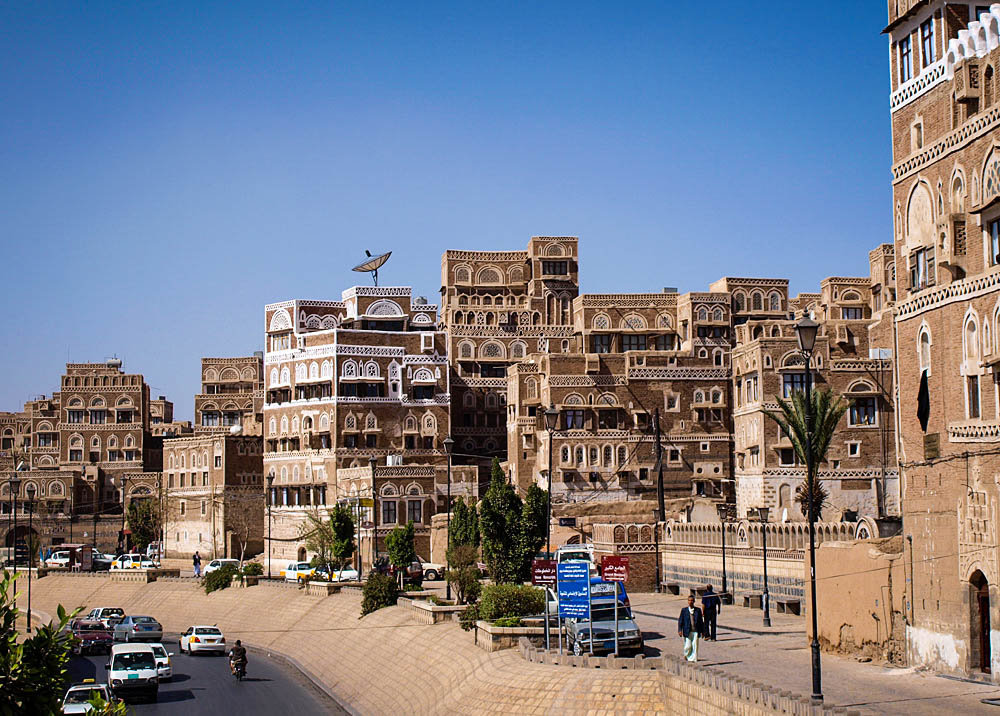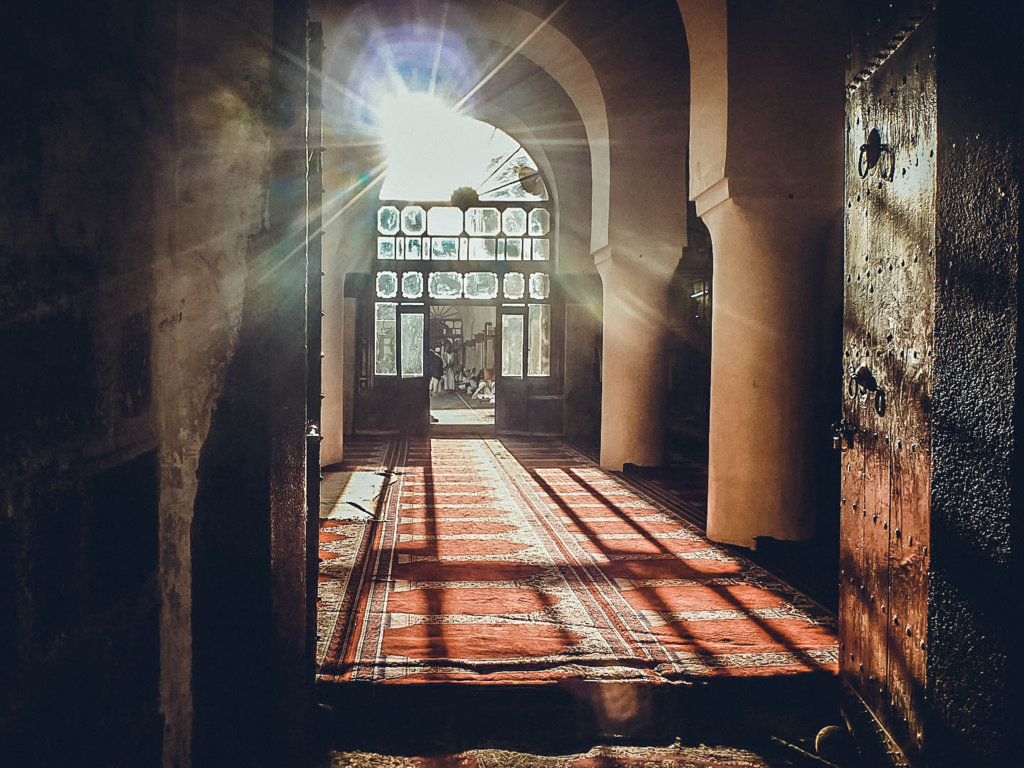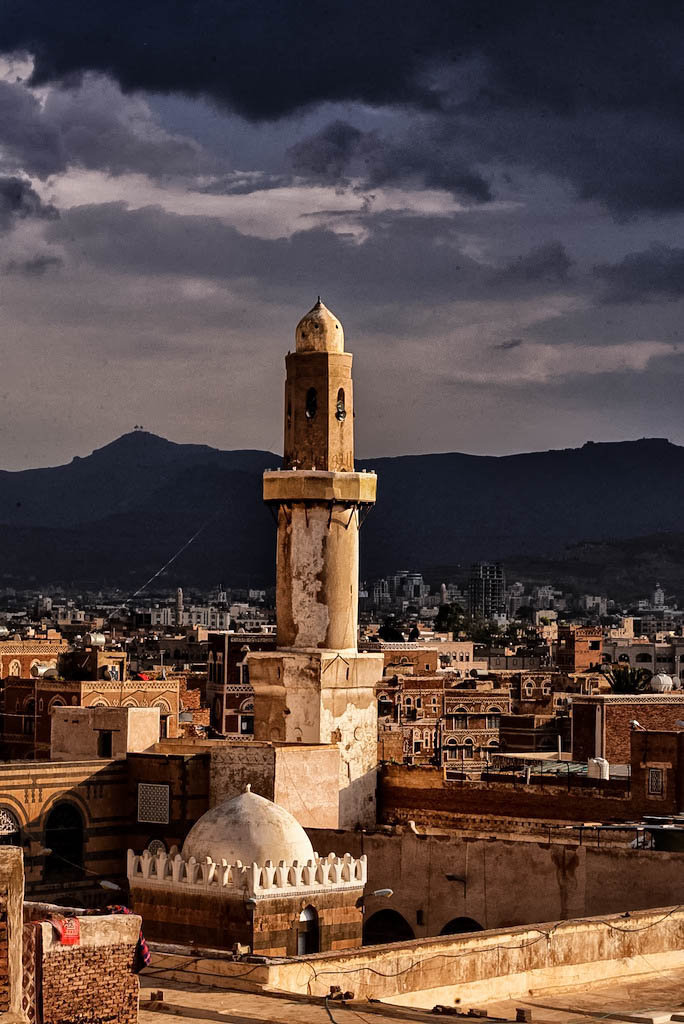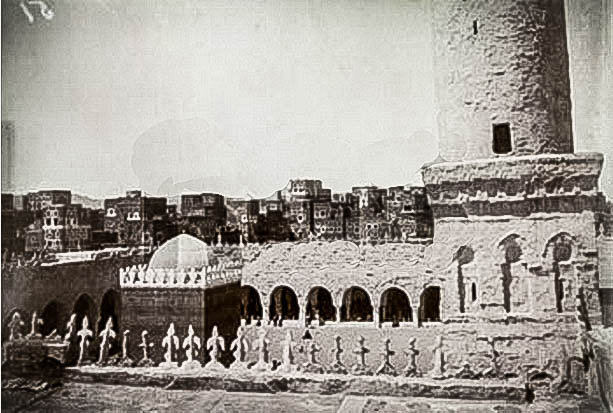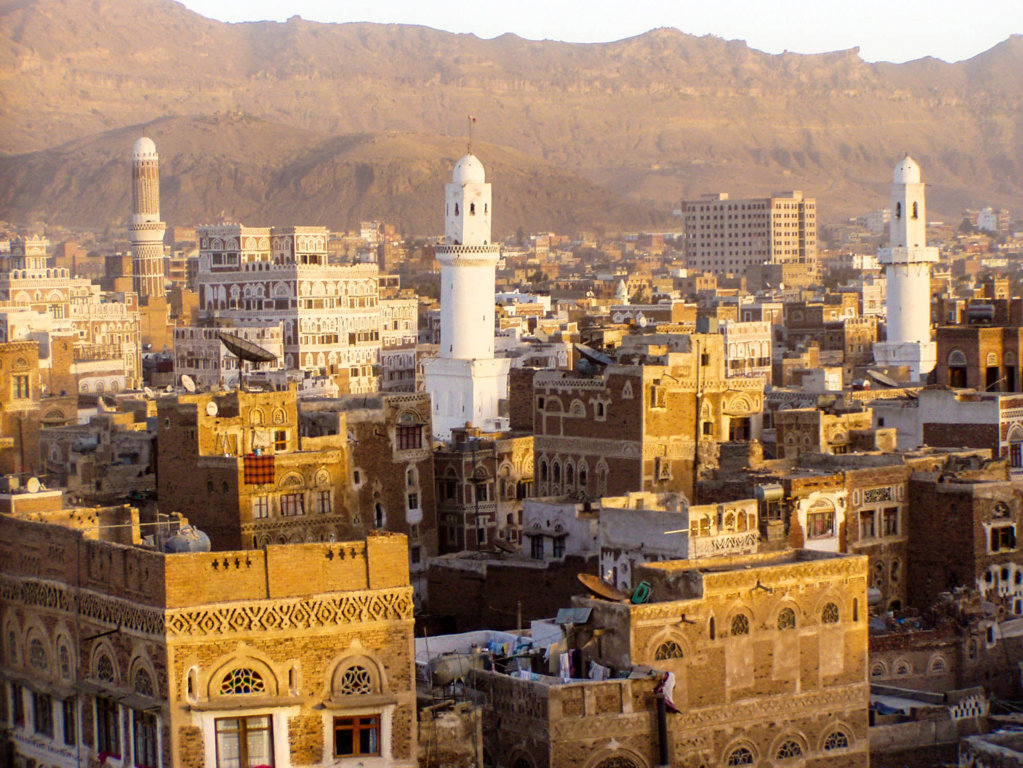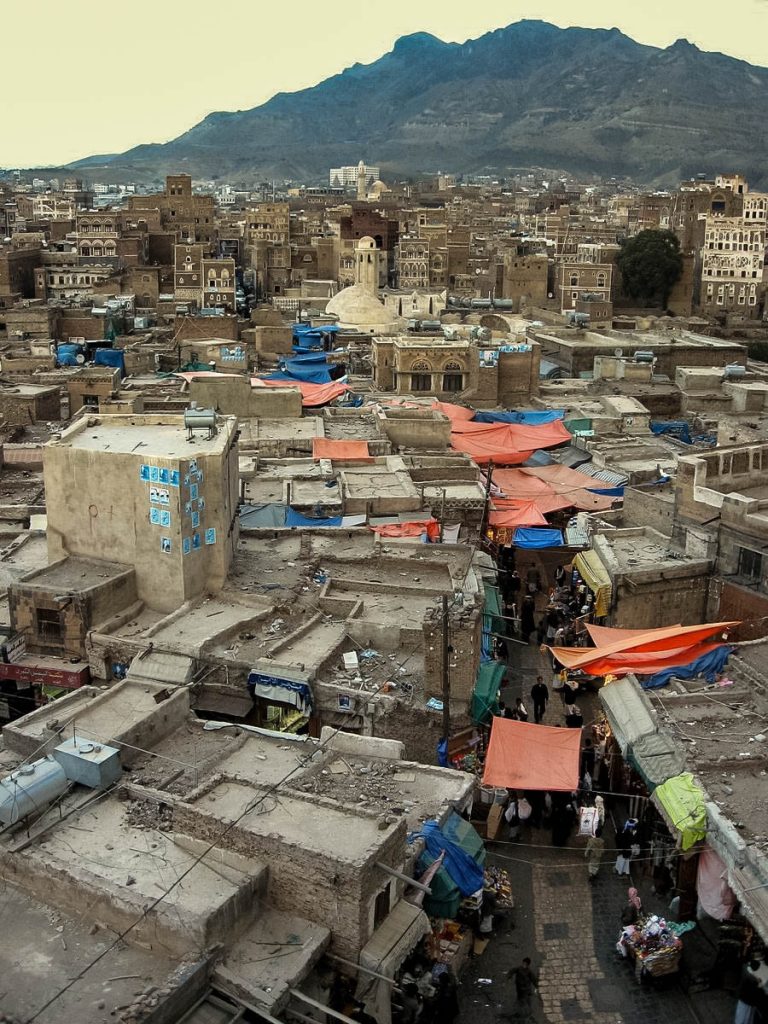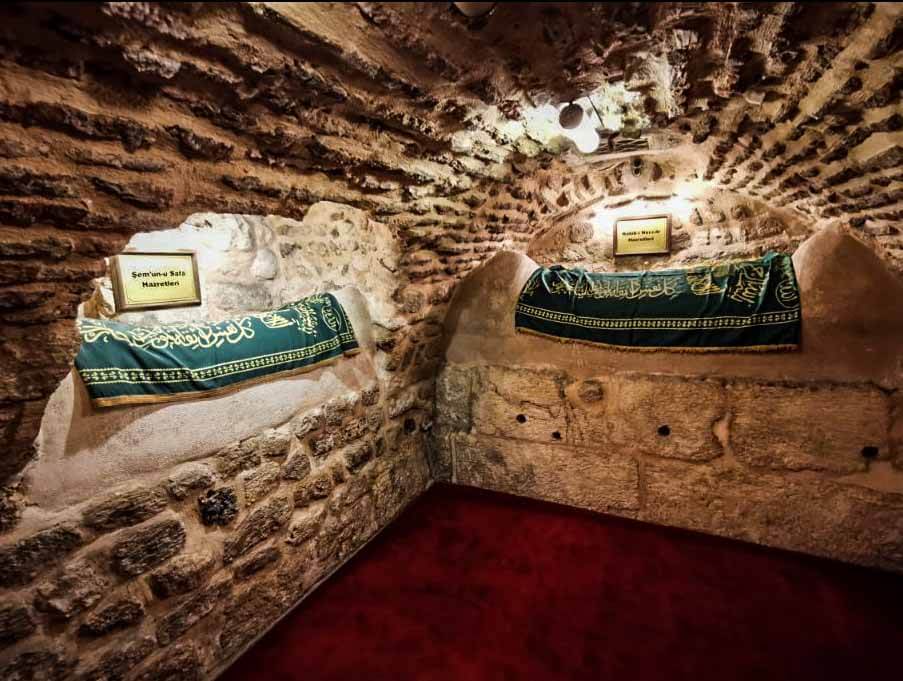Sana’a, Yemen
Coordinates: 15.3531,44.2149
Nearby Places
- Souk Al-Milh, market in sana’a 0.20 Km SE (151°)
- Bab al yemen, Sana’a 0.23 Km SE (154°)
- Talha Mosque, old town Sana’a 0.29 Km W (290°)
Great Mosque of Sanaa is an ancient mosque in Sanaa, Yemen, just east of the old Ghumdan Palace site. It is part of the UNESCO World Heritage Site of the Old City of Sana’a. Dating to the seventh century, it was reportedly built in part from the materials of the Ghumdan palace.
History
According to the authentic Islamic scriptures, the Prophet Muhammad ﷺ was associated with the Mosque’s planning and construction around 630 AD (6 AH). Sana’a was central in the propagation of the Islamic religion in the post-Hijra period. Many of the archaeological finds discovered in the Great Mosque substantiate its construction to the era when Prophet Muhammad ﷺ was alive.
Construction
The Mosque was built upon the site of the Ghumdan Palace, between the two areas of Sana’a, Al-Quati and Al-Sailah. The city’s souq was moved next to the Mosque, affording it with greater safety because of its proximity to a religious building. Along with the Mosque, the palace site also houses a prison and barracks for the armed forces, built during the Ottoman Empire.
In later years, city planning, expansion and orientation were greatly influenced by the construction of the Great Mosque and two other mosques on the city’s north side.[4] Though there are more than one hundred mosques in the Old City, the Grand Mosque is the largest and most notable of them.
Discoveries of Quran in Kufic style and other manuscripts
In 1972–73, when archaeologists removed the plaster, they discovered some 65 artifacts connected to the capital when it contained the Cathedral of Sana’a. These items included large quantities of old manuscripts and parchments, as well as the Sana’a manuscript, found by construction workers while renovating an attic wall. Not realizing the value of their find, they gathered up the documents, packed them away into potato sacks, and left them on the staircase of one of the Mosque’s minarets.
Also discovered while removing the plaster were twelve ancient copies of the Koran (parchments in Kufic script), as well as four thousand rare Arabic manuscripts linked to the start of Islam, the Umayyad period, and Sheba’s Palace of Ghamdan and its destruction. The Koran found here is said to have been written or compiled by Imam Ali. The library in the Mosque has preserved these finds. Other archaeological finds at the Great Mosque are remnants of vaults and old buildings, unearthed in 2006 under the guidance of Dr Mary Lynn, a French archaeologist.
Minarets
Two minarets were built: one on the east side was constructed in the early 9th century, and the one on the west was built in the 12th century.
Damaged caused to Mosque
Floods twice caused substantial damage to the Mosque, after which it was renovated. Karmatis invaded the city in 911 and damaged the Mosque.
Restoration
Much restoration was done in 1130 by the Isma’ili Queen Arwa ibn Ahmad. She was responsible for the elegantly sculpted ceilings of the Mosque’s eastern, western, and northern wings. She was closely linked to the Fatimid dynasty in Egypt. The Mosque’s western minaret, which she had built, is similar to those of the mosques of the same period built in Cairo.
UNESCO World Heritage
The Great Mosque is included on the UNESCO World Heritage Site List, designated in 1986 as list no. 345, under Criteria, which consists of 103 mosques, 14 hammams and over 6,000 houses of Sana’a, all built before the eleventh century.
Preservation
Repairs and maintenance, initiated in 2003, continue to be carried out in phases, such as electrical system renovation. Plastering has been redone, including restoration of the old traditional plasterwork called qudad. Pavings have been improved, and minarets are being restored. Improvements have been made in ablution areas, and modern toilets were added. Other improvements have been made to the water supply and sewerage systems, as well as the removal of old buildings which do not match with the historical and architectural features of the Mosque.


